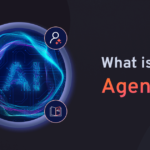Table of Contents

Introduction: AI-Proof Content 2025
The search landscape in 2025 is no longer just about traditional blue links. Google’s integration of AI Overviews (formerly SGE) and the pervasive influence of AI Mode have fundamentally reshaped how users find information and how content ranks. What does this mean for your SEO strategy? It means a seismic shift towards creating AI-Proof Content 2025 – content that Google’s increasingly sophisticated AI models can not only understand but also trust, synthesize, and present as the definitive answer to a user’s query.
This detailed guide will equip you with the essential strategies to ensure your content not only secures top positions on Google SERP but also thrives within the prominent AI Overviews. We’ll dive deep into optimizing for AI’s preferences, from establishing unquestionable credibility to structuring your information for instant comprehension.
Elevating E-E-A-T: The Cornerstone of AI-Proof Content 2025
Google’s AI models are more adept than ever at evaluating the credibility and utility of content. The E-E-A-T framework (Experience, Expertise, Authoritativeness, Trustworthiness) is not just a guideline; it’s the bedrock upon which AI-Proof Content 2025 is built. AI Overviews rigorously prioritize content from sources that demonstrate clear, verifiable E-E-A-T signals.
Why E-E-A-T is more critical than ever for AI:
AI can generate vast amounts of information, but it struggles to replicate genuine human experience and nuanced insight. Google’s AI wants to connect users with real experts and trustworthy information, especially for YMYL (Your Money or Your Life) topics (finance, health, legal, safety). Content lacking clear E-E-A-T will be overlooked by AI Overviews, regardless of keyword density.
Actionable Strategies for Enhanced E-E-A-T:
- Showcase Firsthand Experience (The “E” in E-E-A-T): This is increasingly vital.
- Original Research & Case Studies: Include proprietary data, surveys, experiments, or case studies based on your direct experience.
- Personal Stories & Anecdotes: For relevant topics, integrate personal experiences, challenges, and solutions. (e.g., “Having personally managed dozens of large-scale cloud migrations…”)
- Visual Proof: Use original photos, screenshots, videos, or diagrams from your own work or testing. This verifies “you’ve walked the walk.”
- Highlight Expertise & Credentials:
- Detailed Author Bylines: Every piece of content should have a clear author byline. Include the author’s full name, professional title, relevant academic degrees, certifications, and years of experience. Link to a comprehensive author bio page.
- Guest Contributions from Recognized Experts: Collaborate with established authorities in your field and ensure their credentials are prominently displayed.
- Build Authoritativeness:
- Strategic Backlink Acquisition: Earn high-quality backlinks from other authoritative and relevant websites. These act as “votes of confidence” for Google’s AI. Focus on quality over quantity.
- Brand Mentions & Citations: Aim to be mentioned (even without a link) by reputable news outlets, industry publications, or other highly authoritative sites.
- Thought Leadership: Publish whitepapers, host webinars, speak at industry events, and actively participate in relevant online communities to establish your brand as a leading voice.
- Cultivate Trustworthiness:
- Accuracy & Fact-Checking: Ensure all information is meticulously fact-checked, especially for data and statistics. Provide clear citations for external sources.
- Transparency & Contact Info: Make your contact information, privacy policy, and “About Us” page easily accessible and comprehensive.
- Regular Content Updates: Keep your content fresh, accurate, and relevant. Mark content with “Last Updated” dates, especially for time-sensitive topics.
Structure for AI Comprehension: Crafting Direct Answers & Scannability
Google’s AI is designed to quickly extract and synthesize information to provide direct answers in AI Overviews. Your content’s structure must facilitate this process. For truly AI-Proof Content 2025, think like a knowledge graph, not just a blog post.
Why Structure Matters for AI:
AI models prefer clear, concise, and logically organized information. They are highly efficient at parsing well-structured content to identify core answers and supporting details. Content that is rambling or hides key information will be less likely to be featured.
Actionable Strategies for Optimal Structure:
- The “Answer-First” Approach: For informational queries, provide the direct, concise answer to the user’s question within the first few sentences of your content or immediately after the relevant heading. Follow with elaboration.
- Example: Instead of starting with background, begin with: “To enable two-factor authentication on your Google account, navigate to Security settings, then ‘2-Step Verification’, and follow the prompts to add your phone number or authenticator app.”
- Question-Based Headings (H2, H3, H4): Frame your subheadings as specific questions users might ask (e.g., “What is Multimodal AI?”, “How does AI impact SEO?”, “When will AI Overviews launch globally?”). This directly signals intent to the AI.
- Utilize Lists, Tables, and Bullet Points: Break down complex information into easily digestible formats. These are prime candidates for AI extraction and inclusion in summary snippets.
- Examples: “Key Benefits:”, “Steps to Implement:”, “Pros and Cons Table.”
- Short Paragraphs and Clear Language: Avoid dense blocks of text. Use short, focused paragraphs and clear, conversational language. Avoid jargon where simpler terms suffice.
- Include a TL;DR (Too Long; Didn’t Read) or Key Takeaways Section: For longer articles, a brief, high-level summary at the top or bottom can serve as an excellent candidate for an AI Overview snippet, providing immediate value.
Strategic Schema Markup: Speaking AI’s Language for AI-Proof Content 2025
Structured data, powered by Schema.org vocabulary and implemented via JSON-LD, is your content’s direct communication channel with Google’s AI models. It explicitly tells the AI what your content is about, its purpose, and key entities within it.
Why Schema is Indispensable for AI:
AI models, including Google’s Gemini, rely on structured data to build their knowledge graphs and understand the context of your content. Schema doesn’t just help with rich results; it directly enhances the AI’s ability to interpret and utilize your information in generated answers.
Actionable Strategies for Schema Implementation:
- FAQPage Schema: If your content includes a section answering frequently asked questions, use
FAQPageschema. This is a common source for AI Overviews and “People Also Ask” sections. - HowTo Schema: For step-by-step guides or tutorials,
HowToschema clearly delineates each step, making it easy for AI to extract instructions. - Article Schema (and subtypes): Ensure all your articles use
Articleschema (or more specific types likeNewsArticle,BlogPosting) with properties such asheadline,datePublished,dateModified, and crucially,author(linking toPersonorOrganizationschema to boost E-E-A-T). - Organization and Person Schema: For your website and authors, implement
OrganizationandPersonschema to provide explicit information about your entity and its creators, directly feeding into E-E-A-T signals. - Review and Product Schema: If you review products or services, use
ReviewandProductschema to clearly mark up star ratings, pricing, and product details. - Validate Your Markup: Always use Google’s Rich Results Test tool to ensure your schema implementation is correct, error-free, and eligible for rich snippets.
Building Topical Authority: Comprehensive Coverage for AI-Proof Content 2025
Google’s AI seeks comprehensive, authoritative sources on a given topic, not just isolated articles. To create truly AI-Proof Content 2025, you must demonstrate deep expertise across an entire subject area, not just individual keywords.
Why Topical Authority is Key for AI:
AI models evaluate your site’s overall expertise and depth on a subject. A single, keyword-stuffed article won’t suffice; a well-structured network of interlinked content signals a profound understanding of the topic, making your site a go-to source for AI.
Actionable Strategies for Topical Authority:
- Identify Core Topics: Define broad, overarching topics relevant to your niche that align with your business goals and audience needs. These are your “pillar” topics.
- Develop Pillar Content: Create comprehensive, long-form “pillar” pages that broadly cover a core topic. These pages should serve as ultimate guides or resource hubs.
- Create Cluster Content: Write several supporting articles (cluster content) that delve into specific sub-topics or answer narrower questions related to your pillar content. Each cluster piece should thoroughly explore its specific angle.
- Implement Robust Internal Linking: Crucially, link between your pillar page and all relevant cluster content. Use descriptive anchor text that clearly indicates the linked page’s topic. Also, link between related cluster articles to create a robust semantic network. This helps AI understand the relationships between your content pieces and your overall authority.
- Regularly Expand & Update: Continuously add new cluster content to fill gaps, update existing articles with fresh information, and refine internal links to ensure your topical coverage remains exhaustive and current.
Focus on User Intent & Unique Value: The Human Element in AI-Proof Content 2025
Ultimately, Google’s AI wants to deliver the most helpful, satisfying, and unique content to its users. While AI can process information, it cannot replicate genuine human insight, unique data, or a fresh perspective.
Why User Intent & Unique Value are Paramount:
AI models are designed to understand the nuance of user queries and match them with content that best fulfills that intent. Generic, rehashed content will struggle to compete with AI-generated summaries or with truly original human-created work. Your AI-Proof Content 2025 must stand out.
Actionable Strategies for User Intent & Unique Value:
- Deep Dive into Search Intent: Before writing, meticulously analyze the underlying intent behind user queries. Is the user seeking information (informational), trying to make a purchase (transactional), comparing options (commercial investigation), or looking for a specific website (navigational)? Tailor your content format and depth to match this intent.
- Consider conversational queries: As voice search and AI chat interfaces grow, people use more natural, long-tail questions. Optimize for these.
- Offer Unique Insights & Original Data: Don’t just regurgitate common knowledge.
- Proprietary Research: Conduct your own surveys, experiments, or data analyses.
- Expert Interviews: Feature exclusive quotes or insights from industry leaders.
- Unique Perspectives: Offer a fresh angle or a contrarian viewpoint backed by solid reasoning.
- Real-World Examples & Case Studies: Illustrate concepts with tangible examples from your business or client experiences.
- Address Follow-up Questions: Anticipate what questions a user might have after their initial query and address them within your content. This demonstrates comprehensive understanding and keeps users on your site longer.
- Prioritize User Experience (UX): A strong UX signals quality to Google’s algorithms (both human-driven and AI-driven).
- Page Speed & Core Web Vitals: Ensure your site loads quickly and provides a stable, visually appealing experience.
- Mobile-Friendliness: Your content must be perfectly optimized for mobile devices.
- Clear Calls to Action (CTAs): Guide users effectively once they’ve found their answer.
Stay Agile and Monitor AI Search Trends for Continuous Optimization
The AI landscape is incredibly dynamic. Google’s AI models, and how they interact with and present content, will continue to evolve rapidly. Sustained visibility for your AI-Proof Content 2025 requires continuous monitoring and adaptation.
Why Agility is Crucial:
What works perfectly today for AI Overviews might need refinement tomorrow. Regular monitoring allows you to identify shifts in AI behavior and adjust your SEO strategy proactively.
Actionable Strategies for Agility:
- Observe AI Overview Behavior: Regularly perform searches for your target keywords and analyze how Google’s AI Overviews are presenting information.
- Source Analysis: Which websites are cited? Are they authoritative? What kind of content are they providing?
- Formatting: What formatting is used in the AI Overview (lists, tables, direct paragraphs)?
- Query Types: For what types of queries do AI Overviews appear most frequently (informational, comparative, long-tail)?
- Utilize Search Console & Analytics: While granular AI Overview data might be limited, monitor your performance reports for shifts in impressions, clicks, and average position, especially for queries that are likely to trigger AI features. Look for “zero-click” trends.
- Stay Updated with Google’s Guidelines: Regularly review Google’s official documentation for Webmasters, particularly content quality guidelines and any updates related to AI-generated content or search features.
- A/B Test and Iterate: Experiment with different content structures, answer-first approaches, schema implementations, and E-E-A-T signals to see what resonates best with AI models and users.
- Leverage AI for SEO Research: Use AI tools to identify emerging trends, analyze competitor content for AI potential, and even help brainstorm unique content angles.
Conclusion: AI-Proof Content 2025
AI is not a niche component of search anymore; it is the core. For businesses and content creators, “AI-proofing” your content isn’t an option; it’s a strategic imperative for 2025 and beyond. By rigorously focusing on elevating your E-E-A-T, structuring your content for AI comprehension, leveraging strategic schema markup, building deep topical authority, prioritizing user intent with unique value, and maintaining an agile approach to evolving trends, you can ensure your content not only ranks high on Google SERP but also secures prime visibility within the impactful AI Overviews. The future of search is intelligent, and your content needs to be intelligently optimized to dominate it.









1 thought on “AI-Proof Content 2025: How to Dominate Google SERP & AI Overviews”